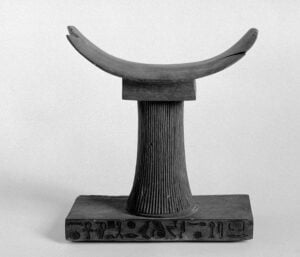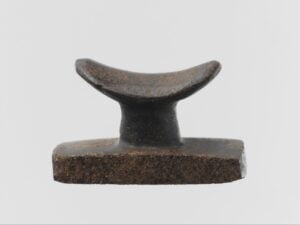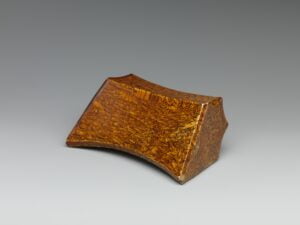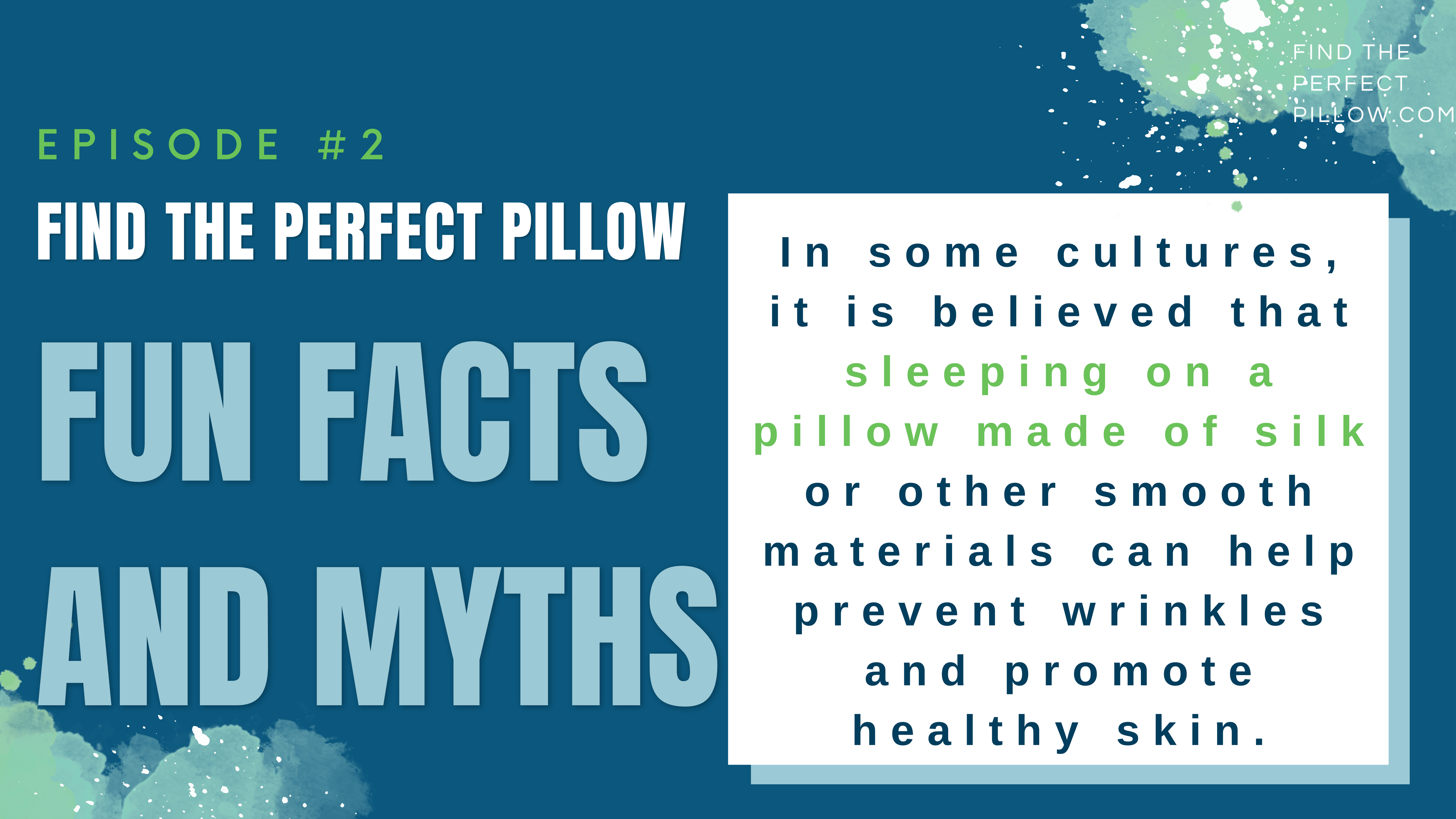Affiliate Disclosure Statement: At FindThePerfectPillow.com, we may earn commissions through affiliate links, including Amazon, at no additional cost to you. Our recommendations are driven by expertise and honest research—never by payment. For full details, visit our Affiliate Disclosure Page. Thank you for trusting us as your go-to pillow authority!
Pillows have been used for centuries to provide comfort and support during sleep and have played an important role in human history
Ancient Mesopotamia
The first known use of pillows was in ancient Mesopotamia around 7,000 BC (1). Back then, pillows were made of stone, wood, or other natural materials such as reeds, straw, or even animal parts.

In ancient Mesopotamia, pillows were not only a utilitarian item but also had cultural and religious significance.
People believe that the earliest pillows were stone-made, used by the wealthy as status symbols. As time progressed, pillows made of wood, bronze, and even jade were used. These pillows were often intricately carved with religious symbols or scenes from everyday life.
The use of pillows in Mesopotamia was not limited to the wealthy, as evidence shows that even commoners used pillows made of reeds or papyrus. However, the materials used for pillows varied depending on social status.
Pillows were also used in religious ceremonies and were often made of precious metals and adorned with jewels. The belief was that sleeping on such a pillow would bring good fortune and blessings.
In conclusion, pillows have played an important role in Mesopotamian culture and history. From their use as a status symbol to their religious significance, pillows have been an integral part of daily life. References for further reading include “Mesopotamia: The Invention of the Pillow” by J. A. R. Brown and “Pillows in Ancient Mesopotamia” by E. A. Wallis Budge.
Mayan Culture
Pillows have played a significant role in Mayan culture since ancient times. The Mayans believed that pillows could connect them to their gods, and therefore, they were highly valued.
Mayan pillows were made from various materials, including cotton, feathers, and even jade. They were often intricately decorated with embroidery and featured colorful designs that symbolized different aspects of Mayan life.
One of the most interesting aspects of Mayan pillows was their use in religious ceremonies. Mayan priests would sleep on pillows during ceremonies, believing that this would allow them to communicate with the gods through their dreams. They also believed that pillows could provide protection from evil spirits.
In addition to their religious significance, pillows also played a practical role in Mayan society. They were used as headrests to keep the head elevated during sleep, providing relief from neck pain and discomfort. Mayan pillows were also used as seating cushions and even as storage containers for personal items.
Overall, the history of pillows in Mayan culture is a fascinating subject that highlights the importance of these seemingly simple objects. They were much more than just a place to rest one’s head – they were a tool for connecting with the divine and a symbol of Mayan identity and culture.
African Culture
Pillows have been used in Africa for centuries, serving both functional and decorative purposes. The history of pillows in Africa is fascinating, and it sheds light on the cultural and societal practices of different African communities
They were often used as decorative pieces, with intricate patterns and designs that reflected the cultural heritage of the community. Some cultures also used pillows as a way of displaying wealth and status, with the most elaborate designs reserved for the ruling class.
Across the continent, pillows were also used for ceremonial purposes. In some cultures, pillows were used to support the head of a bride during a wedding ceremony, symbolizing the comfort and support that her new husband would provide. They were also used in traditional healing practices, with pillows made from specific materials believed to have healing properties.
Ancient Egypt
Ancient Egyptians were known for their advanced civilization, which included impressive achievements in architecture, art, medicine, and technology. One of the most interesting aspects of their culture was their use of pillows.
Egyptian stone pillows served a practical function of preventing insects and vermin crawling into one’s mouth, nose, ears or across the face, and allowing air to flow under the head to cool the sleeper. They were also believed to protect the spiritual life of the head, as they were often engraved with protective imagery and placed under the heads of the deceased.
Pillows were an important part of daily life in ancient Egypt. They were made from a variety of materials, including stone, wood, and cloth, and were used for a variety of purposes. Pillows were used to support the head and neck during sleep, as well as to prop up the body while sitting or lounging.
In ancient Egypt, pillows were considered a symbol of luxury and were often used to display the wealth and status of their owners. . Royalty and nobility would often have elaborate, ornate pillows made from expensive materials such as ebony, ivory, gold, silver, and silk; while commoners used pillows made of stone or wood. Egyptians also believed that pillows had health benefits, as they kept the head and neck aligned and helped prevent snoring.

One of the most interesting things about ancient Egyptian pillows is their shape. Unlike modern pillows, which are generally rectangular or square, ancient Egyptian pillows were often shaped like an animal or a human body. These pillows were designed to provide additional support to the head and neck, as well as to serve as a decorative item.
The use of pillows in ancient Egypt is well documented in art and literature. For example, the famous Egyptian Book of the Dead includes a depiction of a woman using a pillow while reclining on a couch. This image shows that pillows were not just used for sleeping, but also for relaxation and leisure.
Overall, the history of pillows in ancient Egypt is a fascinating subject that sheds light on the daily life and cultural practices of this remarkable civilization.
Today, pillows are still an important part of African culture. They are used for practical purposes like sleeping, as well as for decorative purposes in homes and public spaces. Many African designers have also incorporated traditional pillow designs into modern home decor, creating a bridge between the past and present.
Caribbean Culture
Pillows have played an integral role in Caribbean culture for centuries. The history of pillows in Caribbean culture can be traced back to the pre-Columbian era, where they were used as decorative objects and symbols of status.
Indigenous communities in the Caribbean used pillows made from natural materials such as cotton, palm leaves, and animal skins. These pillows were adorned with intricate designs and served as a symbol of wealth and power. Later, materials such as silk and velvet were used and pillows were designed more ornate and decorative. They were often used as gifts to show appreciation or as a way to cement alliances between different communities.
During the colonial era, pillows became a symbol of luxury and were used by wealthy plantation owners and their families. Many of these pillows were imported from Europe and featured intricate embroidery and lacework.
In the modern era, pillows continue to play an important role in Caribbean culture. They are used in homes, hotels, and resorts throughout the region, and are often handcrafted by local artisans using traditional techniques.
Today, pillows are not only a symbol of status and luxury, but also serve as a means of expressing cultural identity and pride. From the colorful designs of Trinidad and Tobago’s Carnival to the intricate beadwork of the Garifuna people of Belize, pillows continue to be an important part of Caribbean culture.
Chinese Culture
Pillows have been an integral part of Chinese culture for centuries, serving both practical and symbolic functions. The history of pillows in China can be traced back to the Shang Dynasty (c. 1600-1046 BCE), where they were used primarily by the wealthy and noble classes.
Traditionally, pillows were made of wood or stone and were used to elevate the head while sleeping, as well as to support the neck and spine. The shape and size of pillows varied according to one’s social status and personal preference.
However, during the Tang Dynasty (618-907 CE), a new type of pillow emerged – the soft pillow. Made of materials such as silk, cotton, and bamboo, these pillows were considered a luxury item and were only available to the wealthy.

Despite their popularity, soft pillows were not embraced by everyone in Chinese society. Some believed that the softness of the pillow stole energy from the body, causing fatigue and weakness. As a result, many continued to use harder, more traditional pillows.
Soft pillows were not embraced by everyone in Chinese society. Some believed that the softness of the pillow stole energy from the body, causing fatigue and weakness.
In addition to their practical use, pillows also had symbolic meaning in Chinese culture. They were often given as gifts to newlyweds, and were thought to symbolize fertility and prosperity. Pillows were also used in various rituals and ceremonies, such as funerals, where they were placed under the deceased’s head to provide comfort in the afterlife.
Today, pillows in China come in a variety of shapes, sizes, and materials, and are widely used by people from all walks of life. From traditional wooden pillows to modern memory foam designs, the history of pillows in China continues to evolve, reflecting changes in both technology and culture.
Indian Culture
Pillows have been an important part of Indian culture for centuries. In ancient times, people used to sleep on mats or animal hides, but as civilization progressed, they started using pillows made of various materials such as cotton, silk, and even feathers.
The earliest references to pillows in India are found in the Vedas, which are ancient Hindu texts dating back to 1500 BCE. These texts describe pillows made of grass, leaves, and even wood. It is believed that these pillows were used to elevate the head while sleeping, as it was believed to aid in digestion.
During the Mughal period, pillows became a symbol of luxury and status. The Mughal emperors were known for their extravagant lifestyles, and they used pillows made of silk, velvet, and even gold and silver. These pillows were often intricately embroidered with elaborate designs and patterns.
In the 19th century, with the advent of industrialization, pillows became more affordable and accessible to the masses. The British introduced new techniques and materials, such as foam and synthetic fibers, which made pillows more comfortable and durable.
Today, pillows are an essential part of every household in India. They come in different shapes, sizes, and materials, catering to the specific needs and preferences of individuals. From traditional cotton-filled pillows to modern memory foam pillows, there is a wide range of options available in the market.
In conclusion, the history of pillows in India is a reflection of the country’s rich cultural heritage and its evolution over time. From humble beginnings to becoming a symbol of luxury and comfort, pillows have played a significant role in shaping the way Indians sleep and rest.
Greek and Roman Culture
Pillows have been used for thousands of years, and the Greeks and Romans were no exception. In fact, they played a significant role in the development of the modern pillow.
The Greeks used pillows made from various materials, including stone, wood, and even bronze. They believed that the type of pillow one used reflected their social status. Wealthy Greeks often used softer materials such as feathers, while the less fortunate used harder materials like wood or stone.
The Romans also used pillows, but they were more interested in comfort than status. They used pillows made from feathers, wool, and even straw. The Roman aristocracy even had special pillows made of precious materials like ivory and gold.
Both the Greeks and Romans also believed in the therapeutic benefits of pillows. They used them to alleviate headaches, neck pain, and other ailments. In fact, Hippocrates, the father of modern medicine, recommended the use of pillows for various conditions.
During the Middle Ages, pillows fell out of fashion in Europe, and people began using wooden headrests instead. However, pillows made a comeback during the Renaissance, and by the 16th century, they were widely used in Europe once again.
Today, pillows are an essential part of our daily lives, and they come in all shapes, sizes, and materials. From memory foam to down feathers, there is a pillow for everyone. And while we may not think about the history behind them, the Greeks and Romans played an important role in their evolution.
Native American Culture
Pillows have long been an essential part of Native American culture, serving not only as a practical sleeping aid but also as a symbol of cultural heritage and tradition.
Historically, Native Americans crafted pillows from various materials, such as animal hides, furs, and plant fibers. These materials were often decorated with intricate designs and symbols, such as tribal motifs or representations of spiritual beliefs.
One significant use of pillows in Native American culture was as part of traditional healing practices. Shamans would use pillows filled with herbs and other natural materials to help alleviate physical and spiritual ailments, such as headaches or anxiety.
Native Americans used pillows in their homes to display wealth and status. People often gave elaborately decorated pillows as gifts or used them to adorn the homes of tribal leaders and other prominent community members.
Today, Native American pillows continue to be an important part of cultural heritage and tradition. Contemporary Native American artists and designers find inspiration in traditional pillow-making techniques. They incorporate these techniques into modern designs. These designs pay homage to their ancestors’ rich history and culture.
Pillows have played a significant role in Native American culture for centuries, serving as both practical and symbolic objects. By understanding the history and significance of these pillows, we can gain a deeper appreciation for the cultural heritage and traditions of Native American communities.
19th Century
It wasn’t until the 19th century that pillows became more commonly used for sleeping. This was due in part to the Industrial Revolution, which made it easier and cheaper to produce pillows. During this time, people typically filled pillows with feathers or down, creating a soft and comfortable sleeping surface.
Humans have considered pillows a staple of comfort for centuries, but the Industrial Revolution revolutionized their production. Before this period, people hand-stitched pillows and filled them with materials like feathers, straw, or even paper. With the advent of new technologies and manufacturing processes, the industry could produce pillows on a much larger scale.
The mass production of pillows began in the late 18th century with the invention of the power loom.
The mass production of pillows began in the late 18th century with the invention of the power loom. This machine allowed for faster and more efficient weaving of fabrics, including those used for pillowcases. This led to an increase in demand for pillows, as they became more affordable and accessible to the general public.
Another important development was the invention of the cotton gin, which made cotton production much faster and more efficient. This, in turn, led to an increase in the availability of cotton stuffing for pillows.
As the 19th century progressed, the development of new manufacturing processes enabled even greater production of pillows. The mid-1800s introduced the sewing machine for precise pillowcase stitching. In the early 1900s, the automated tufting machine improved pillow filling speed and efficiency. These innovations revolutionized the pillow industry.
21st Century
Today, manufacturers produce pillows on a massive scale using various materials and manufacturing processes, each designed for a specific purpose. From memory foam to down feathers, there are countless options available to consumers. Designers create some pillows for head and neck support, while others aim to relieve pain or discomfort in specific body areas. Pillows are also available in a range of materials, from traditional feathers and down to memory foam and other synthetic materials. Remember their humble origins, from stones and reeds. They evolved into symbols of wealth and luxury. Pillows have played a vital role in human history. Today, they continue to be an essential part of our lives, providing comfort, support, and a good night’s sleep.






